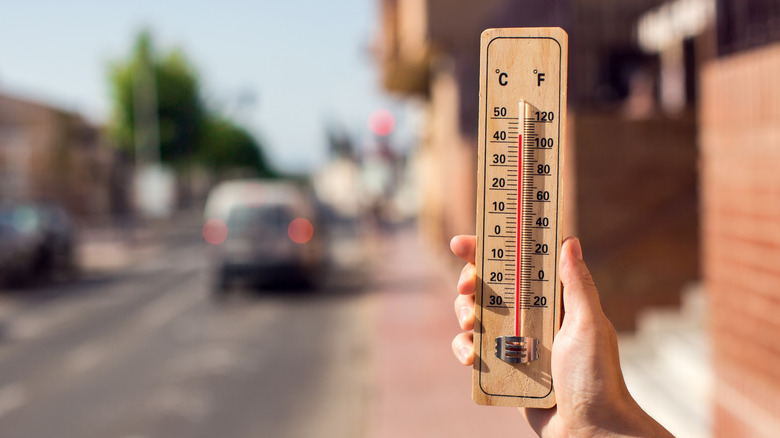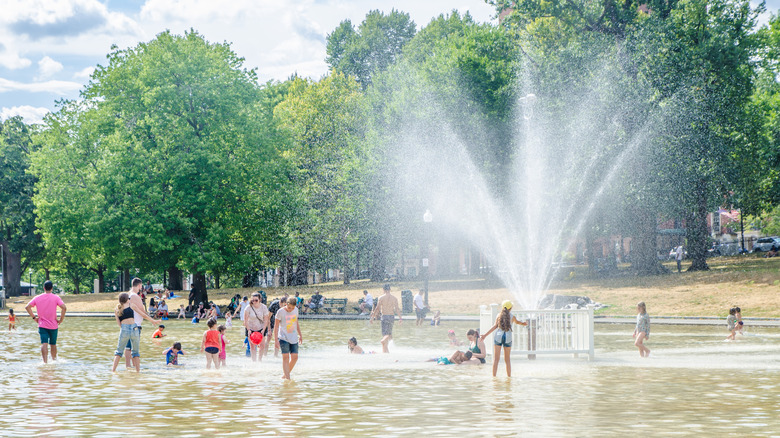What The Urban Heat Island Effect Means And Why It Should Be Considered Before Your Summer Vacation
Summer is the perfect time for vacation, with the kids out of school and outdoor fun beckoning. However, while you're looking for warm-weather destinations, you may be missing a crucial a part of your planning. If there's a heat wave on the horizon, you might want to rethink that trip to the big city due to something called the Urban Heat Island (UHI) effect. Urban Heat Islands are an spots in a city that are significantly hotter than the surrounding areas, generally due to a larger percentage of the area being dominated by buildings and asphalt. Concrete, roads, and buildings retain and radiate heat, leading to significantly warmer temperatures than the greener parts of the city, such as those with trees and parks (as well as more rural areas outside of the city).
A 2023 study by ARUP, used AI and satellite imaging to look at Cairo, London, Los Angeles, Madrid, Mumbai, and New York, focusing on the hottest and coolest parts of each. The increased temperatures of the hottest spots in these cities varied from 8 to 14.5 degrees Fahrenheit warmer. For instance, Madrid's hottest spot was the Plaza Juan Pujol, which was 14.5 degrees Fahrenheit hotter than the coolest, the North of Casa de Campo. When you imagine the difference between walking around and sightseeing in 80 versus 94.5 degrees Fahrenheit, you can see why you may prefer visiting a national park to beat the heat.
Urban Heat Islands and what they mean for your vacation
That isn't the only study about UHI. Climate Central published a story on how this phenomenon affected 44 cities in the United States, and found that half of them had a UHI index of 8 degrees Fahrenheit or more. They give the example of a day in northern Texas that may be 95 degrees Fahrenheit outside the city, whereas people in downtown Dallas may be dealing with temperatures of 104 degrees Fahrenheit. Vehicle emissions, factories, people packed into small spaces, and buildings that are close together can make this worse, and keep the temperature from cooling off much at night because concrete and buildings hold the heat.
In terms of your vacation, take your health into consideration. Higher temperatures can mean a higher risk for dehydration and heat stroke. In extreme cases, asphalt and other surfaces can also cause burns, as they did in July 2023 in Phoenix, Arizona, when a 71-year-old man was severely burned after falling to the ground.
If you do choose to visit a place with hot temperatures, you should know how to keep cool. Look into activities with air conditioning, like museums, and schedule breaks in sightseeing, such as enjoying a cold drink at a cafe. Dress in light colors and breathable fabrics, like cotton and linen, but be sure to consider the country's dress code when packing. Know the signs of heat stroke and how to avoid it, like carrying a reusable water bottle and staying hydrated. And look into visiting the city's larger parks during the hottest part of the day.

